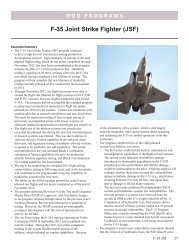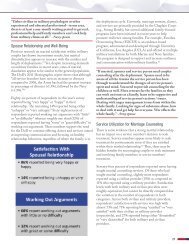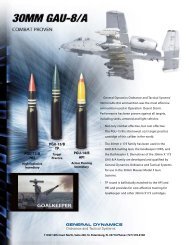marine corps uniform regulations - US
marine corps uniform regulations - US
marine corps uniform regulations - US
Create successful ePaper yourself
Turn your PDF publications into a flip-book with our unique Google optimized e-Paper software.
10100. GENERAL<br />
MARINE CORPS UNIFORM REGULATIONS<br />
CHAPTER 10<br />
CARE AND MARKING OF UNIFORMS<br />
SECTION 1: CARE OF THE UNIFORM<br />
1. The following information is presented to help prolong the useful life of<br />
<strong>uniform</strong>s and accessories so that they may be worn with the justifiable pride,<br />
which distinguishes Marines in <strong>uniform</strong>.<br />
2. No matter how well-fitting a <strong>uniform</strong> is when new, it will not continue to<br />
look its best unless well cared for both during wear and when not in use. A<br />
<strong>uniform</strong> should be put on carefully and kept buttoned. Large or heavy objects<br />
carried in the pockets will soon destroy the shape of the <strong>uniform</strong>. When not<br />
in use, carefully place <strong>uniform</strong>s on hangers and keep in a well-ventilated<br />
storage space. Well-constructed wooden or plastic hangers shaped to fit the<br />
shoulder contour, with locking trouser bar or clips, are recommended. When<br />
<strong>uniform</strong>s are folded in duffel bags or other containers for storage or<br />
shipment, fold them carefully to preserve their original shape.<br />
10101. DRESS UNIFORMS<br />
1. Because of less frequent wear, use particular care when storing dress<br />
<strong>uniform</strong>s. Gold braid on evening dress <strong>uniform</strong>s may deteriorate if in close<br />
proximity to any substance containing sulphur, such as rubber and manila or<br />
craft paper. High humidity or sharp temperature changes will also cause<br />
tarnishing if the <strong>uniform</strong> is not adequately protected. An airtight plastic<br />
clothing bag with a packet of desiccant (drying agent) enclosed will give<br />
greatest protection. Place the <strong>uniform</strong> carefully on a substantial hanger and<br />
store in a dry, cool, well-ventilated closet. An experienced tailor should<br />
normally clean gold braid, although liquid nontoxic preparations available<br />
may be used if applied according to manufacturer's instructions. Embroidered<br />
insignia may be kept bright by occasional scrubbing with a nail brush and a<br />
solution of ammonia and water. Do this periodically, or as soon as any signs<br />
of tarnish or corrosion appears. In case of severe corrosion, the insignia<br />
cannot be restored to its original condition and must be replaced. The<br />
synthetic tarnish-resistant gold braided accessory items do not require heavy<br />
cleaning. A soft cloth may be carefully used to remove dust. Since<br />
temperature changes do not affect these items, store as required to protect<br />
the <strong>uniform</strong> fabric itself.<br />
2. According to manufacturer's label instructions, blue-white dress <strong>uniform</strong>s<br />
white items of polyester or polyester/rayon gabardine may be either<br />
professionally dry cleaned, or laundered and pressed. As dry cleaning has<br />
frequently caused the polyester/rayon <strong>uniform</strong>s to become yellow or gray, hand<br />
or machine laundering of these <strong>uniform</strong>s is preferable. Hand launder in warm<br />
water using mild detergent; scrub soiled areas; rinse thoroughly in clear<br />
warm water; dry without wringing. Machine launder using a mild detergent;<br />
complete washing cycle for 30 minutes in 90-degree to 120-degree water; rinse<br />
thoroughly in clear warm water; set automatic dryer for regular fabrics and<br />
10-3






